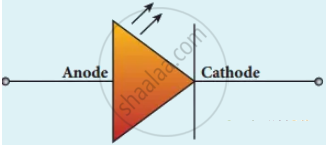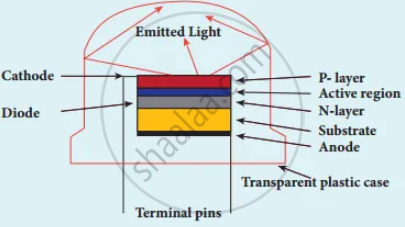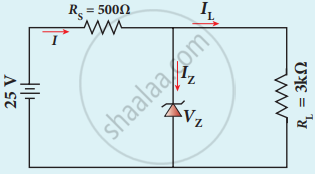Advertisements
Advertisements
प्रश्न
What is an LED? Give the principle of its operation with a diagram.
उत्तर
1. LED is a p-n junction diode which emit visible or invisible light when it is forward bias.
2. It converts electrical energy to light energy.
3. It consists of p-layer, n-layer and substrate. External resistance in series with biasing source is required to limit forward current through LED. It has anode and cathode.

Circuit symbol of LED

Inside view of LED

Schematic diagram to explain recombination process
4. When a p-n junction is forward bias, conduction band electron on n-side and valence band hole on p side diffuse across the junction.
5. When they cross junction, they become excess minority carriers. These excess minority carriers recombine with oppositely charged majority carriers in the respective region.
6. During the recombination process energy is released is the form of light or heat.
7. The colour of the light is determined by the energy band gap of the material.
8. LED’s with wide range colours such as blue (Sic), green (AlGaP), red(GaAsP), white(GaInN) is also available.
APPEARS IN
संबंधित प्रश्न
The barrier potential of a silicon diode is approximately, ____________.
If a positive half-wave rectified voltage is fed to a load resistor, for which part of a cycle there will be current flow through the load?
What do you mean by leakage current in a diode?
Write a short note on diffusion current across the p-n junction.
Mention the types of biasing.
List the applications of light emitting diode.
Explain the construction and working of a full-wave rectifier.
Write notes on the photodiode.
Explain the formation of depletion region and barrier potential in PN junction diode.
In the given figure of a voltage regulator, a Zener diode of breakdown voltage 10 V is employed. Determine the current through the load resistance, the total current and the current through the diode. Use diode approximation.

